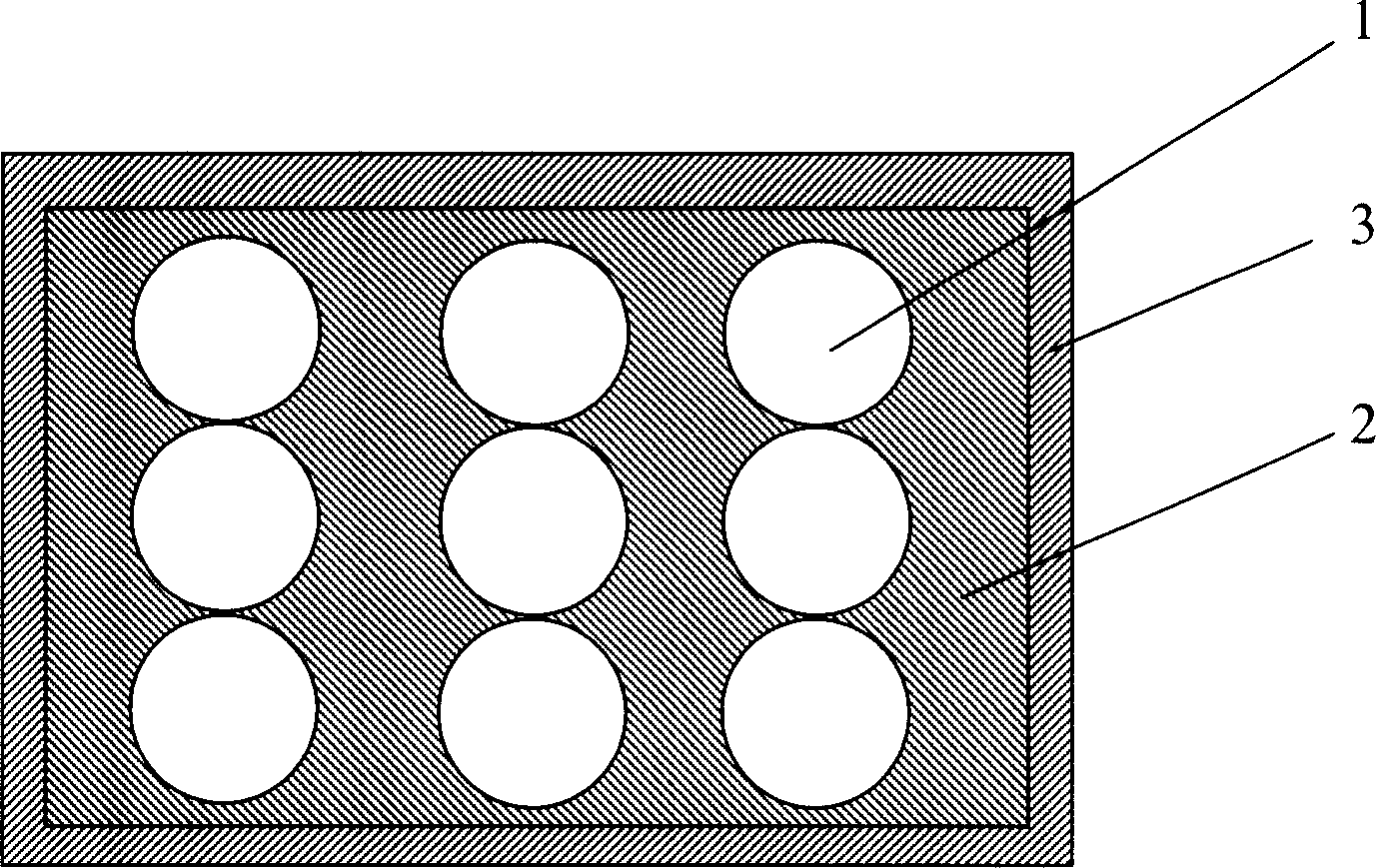Battery bag with temp regulating function
A technology for temperature regulation and battery packs, applied in temperature control, secondary batteries, battery pack components, etc., to achieve the effects of reducing maintenance costs, prolonging service life, and reducing use costs
- Summary
- Abstract
- Description
- Claims
- Application Information
AI Technical Summary
Problems solved by technology
Method used
Image
Examples
Embodiment Construction
[0010] The present invention will be further described below in conjunction with accompanying drawing:
[0011] According to the battery pack with temperature regulating function provided by the present invention, such as figure 1 with figure 2 As shown, the present invention includes a battery pack 1 and a battery pack case 3; wherein, a layer of phase change material 2 is filled between the battery pack 1 and the battery pack case 3, and the phase change temperature of the phase change material 2 is between 0-60 ℃, in direct contact with the battery pack 1. The phase change material 2 is used to adjust the temperature of the battery pack, and control the temperature of the battery pack within a range of 0-60° C. or a narrower range. The battery pack casing 3 is used to seal the phase change material 2 to prevent leakage of the phase change material 2 . The phase change material 2 is in direct contact with the surface of the battery pack 1, so that the limited surface are...
PUM
 Login to View More
Login to View More Abstract
Description
Claims
Application Information
 Login to View More
Login to View More - R&D
- Intellectual Property
- Life Sciences
- Materials
- Tech Scout
- Unparalleled Data Quality
- Higher Quality Content
- 60% Fewer Hallucinations
Browse by: Latest US Patents, China's latest patents, Technical Efficacy Thesaurus, Application Domain, Technology Topic, Popular Technical Reports.
© 2025 PatSnap. All rights reserved.Legal|Privacy policy|Modern Slavery Act Transparency Statement|Sitemap|About US| Contact US: help@patsnap.com


